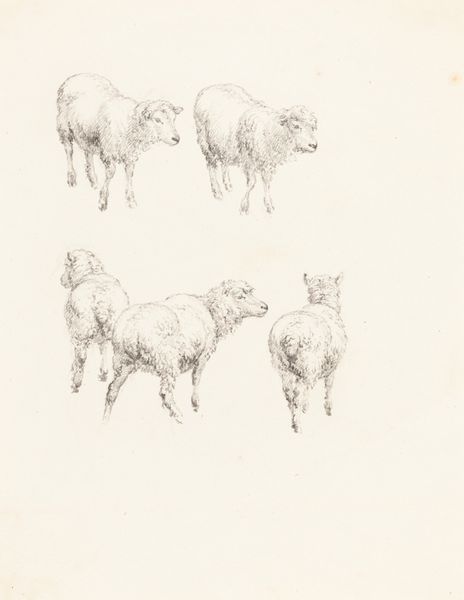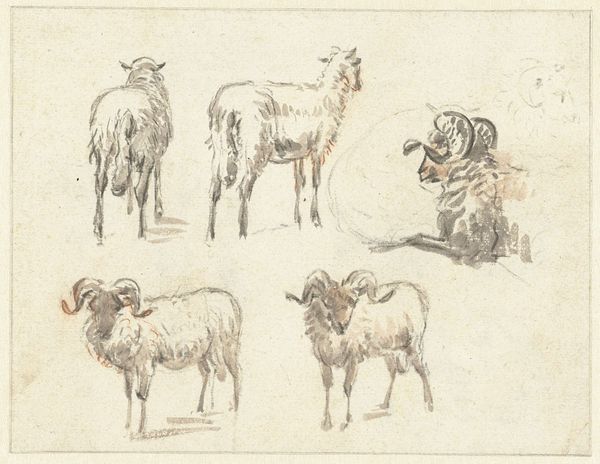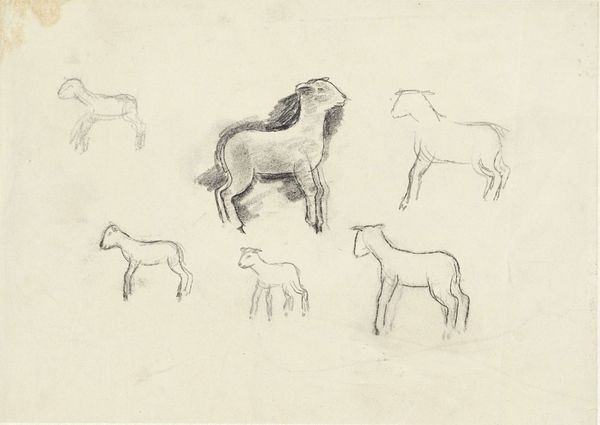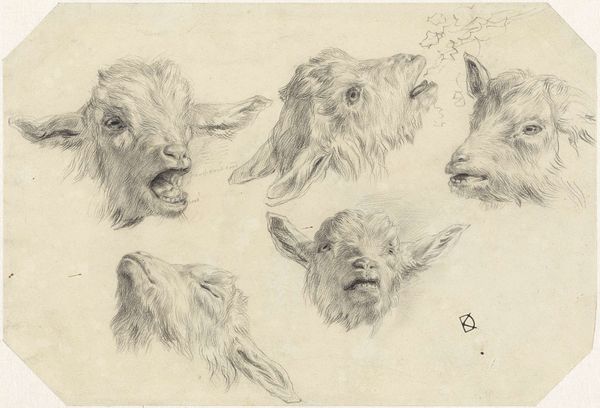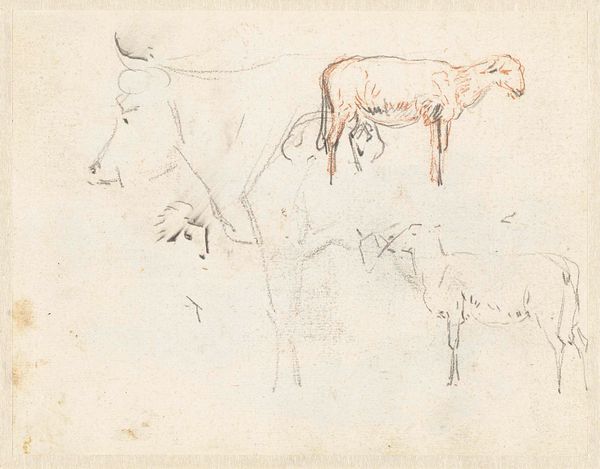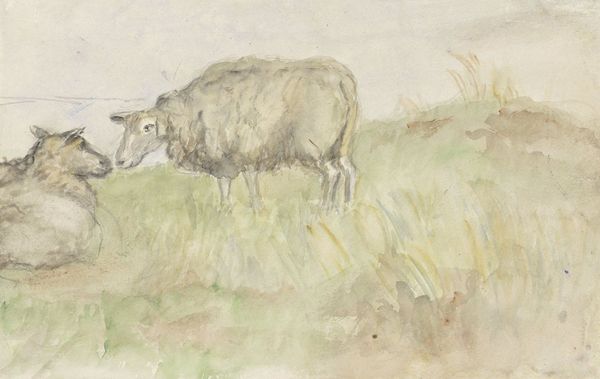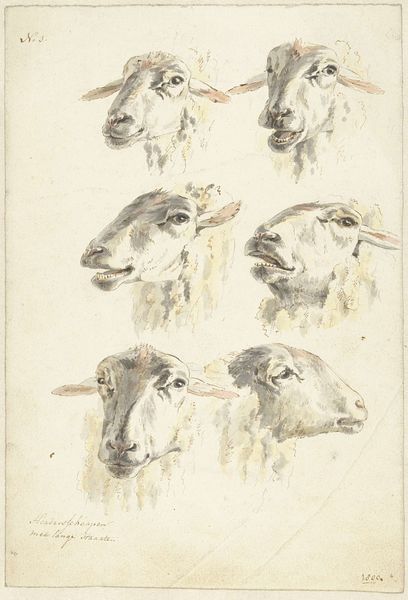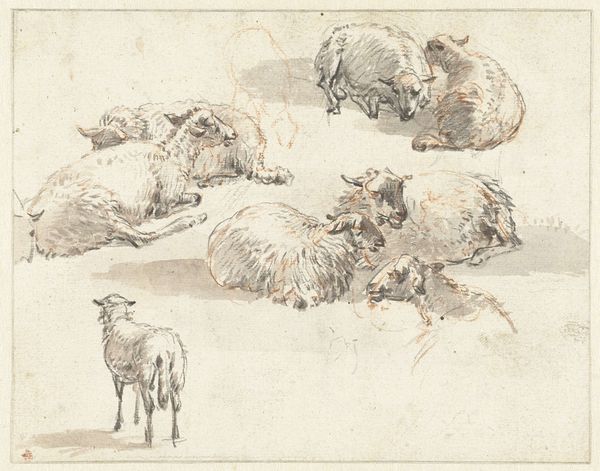
drawing, paper, ink
#
drawing
#
animal
#
paper
#
ink
#
academic-art
#
realism
Dimensions: height 187 mm, width 275 mm
Copyright: Rijks Museum: Open Domain
Curator: The swift strokes immediately caught my eye—so minimalist and spare. Editor: Well, you're seeing what Sientje Mesdag-van Houten allows you to see. This sheet of sketches from between 1844 and 1909, aptly named *Schetsen van schapen,* or "Sketches of Sheep," rendered in ink on paper, is a lovely display of both realism and what would be considered academic art. Curator: Absolutely, but to my eye, the repetition creates a sense of… ritual, or an almost primordial echo, conjuring our dependence on domesticated animals through linear brushstrokes, which evoke images of Paleolithic cave paintings. It's an archetype we can't shake. Editor: An archetype cleverly captured using tonal variations of ink washes. Observe the build-up of darker inks suggesting musculature versus lighter suggestive sketching elsewhere on the page. The artist uses economy of means. The overall organization also directs attention and informs the visual hierarchy; our eye goes directly to the centrally placed dark ewe in profile. Curator: Precisely. It evokes that deep cultural link—the almost instinctual recognition of animals' crucial position. In agrarian society and its memory... even our contemporary relationship. We see our dependency, regardless of our physical detachment. Editor: So, the success lies in the balance between mimetic representation—these *are* recognizable sheep—and, I agree, these echoes of animal symbology that are prevalent in Western art history. It's also charming that she includes so many sketches. The multiple viewpoints and varying degrees of completion imply the lively motion that comes with livestock. Curator: Exactly, the variations on a single theme give them this chorus quality. Editor: She seems to have delighted in observing their natural forms and movements. Each stroke works hard to evoke their characteristic shapes, without embellishment, just an objective observation, though her presence and skill certainly come through in the artistry of the sheet as a whole. Curator: Indeed. And so, Sientje gives us glimpses into a pastoral history, while allowing the viewer to observe and reflect, creating an image which holds us, almost spellbound. Editor: Quite. I appreciate your articulation. She encourages slow, concentrated, looking that, in return, triggers consideration, interpretation and, perhaps, appreciation.
Comments
No comments
Be the first to comment and join the conversation on the ultimate creative platform.
